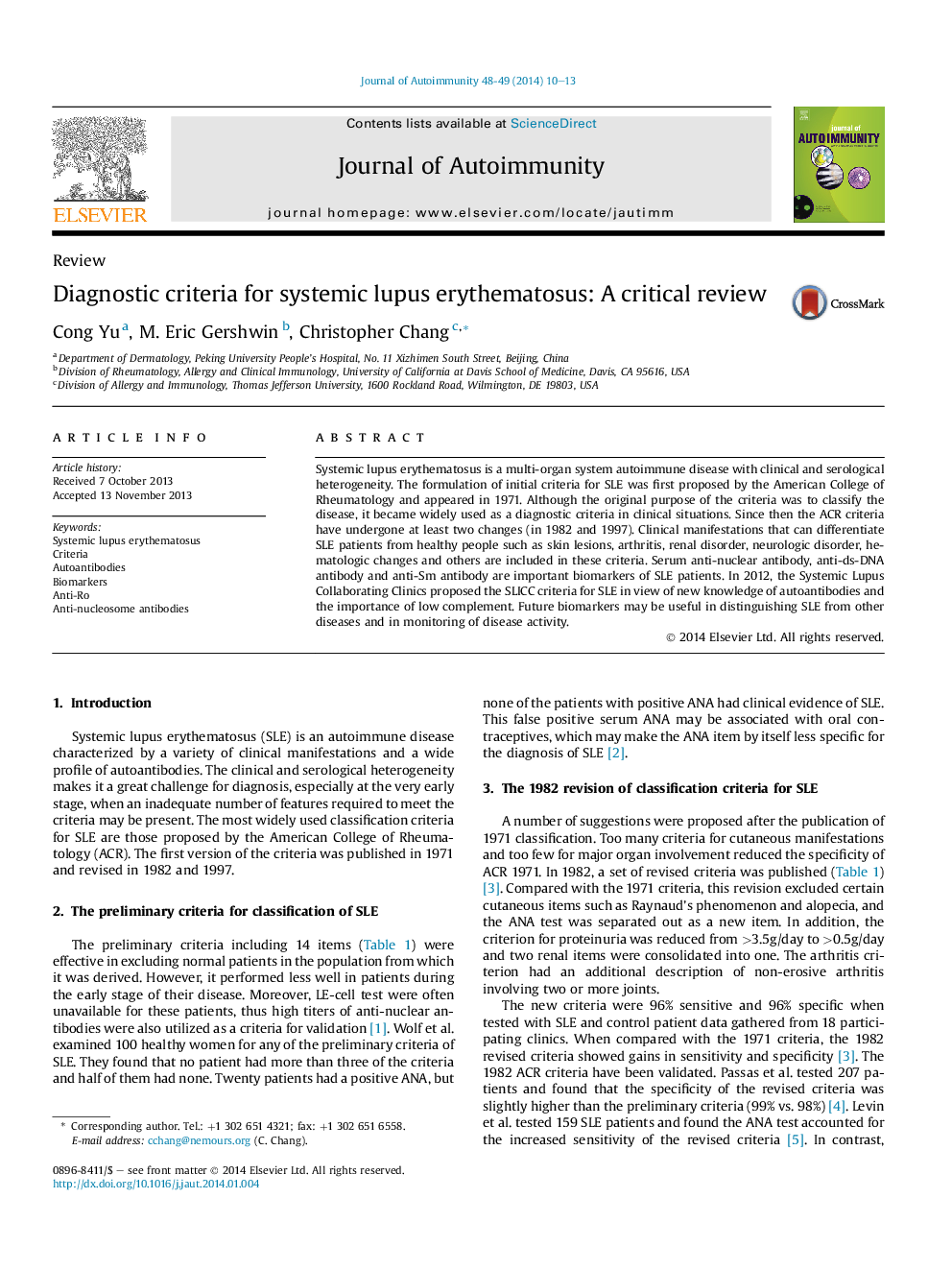| Article ID | Journal | Published Year | Pages | File Type |
|---|---|---|---|---|
| 3367826 | Journal of Autoimmunity | 2014 | 4 Pages |
Systemic lupus erythematosus is a multi-organ system autoimmune disease with clinical and serological heterogeneity. The formulation of initial criteria for SLE was first proposed by the American College of Rheumatology and appeared in 1971. Although the original purpose of the criteria was to classify the disease, it became widely used as a diagnostic criteria in clinical situations. Since then the ACR criteria have undergone at least two changes (in 1982 and 1997). Clinical manifestations that can differentiate SLE patients from healthy people such as skin lesions, arthritis, renal disorder, neurologic disorder, hematologic changes and others are included in these criteria. Serum anti-nuclear antibody, anti-ds-DNA antibody and anti-Sm antibody are important biomarkers of SLE patients. In 2012, the Systemic Lupus Collaborating Clinics proposed the SLICC criteria for SLE in view of new knowledge of autoantibodies and the importance of low complement. Future biomarkers may be useful in distinguishing SLE from other diseases and in monitoring of disease activity.
